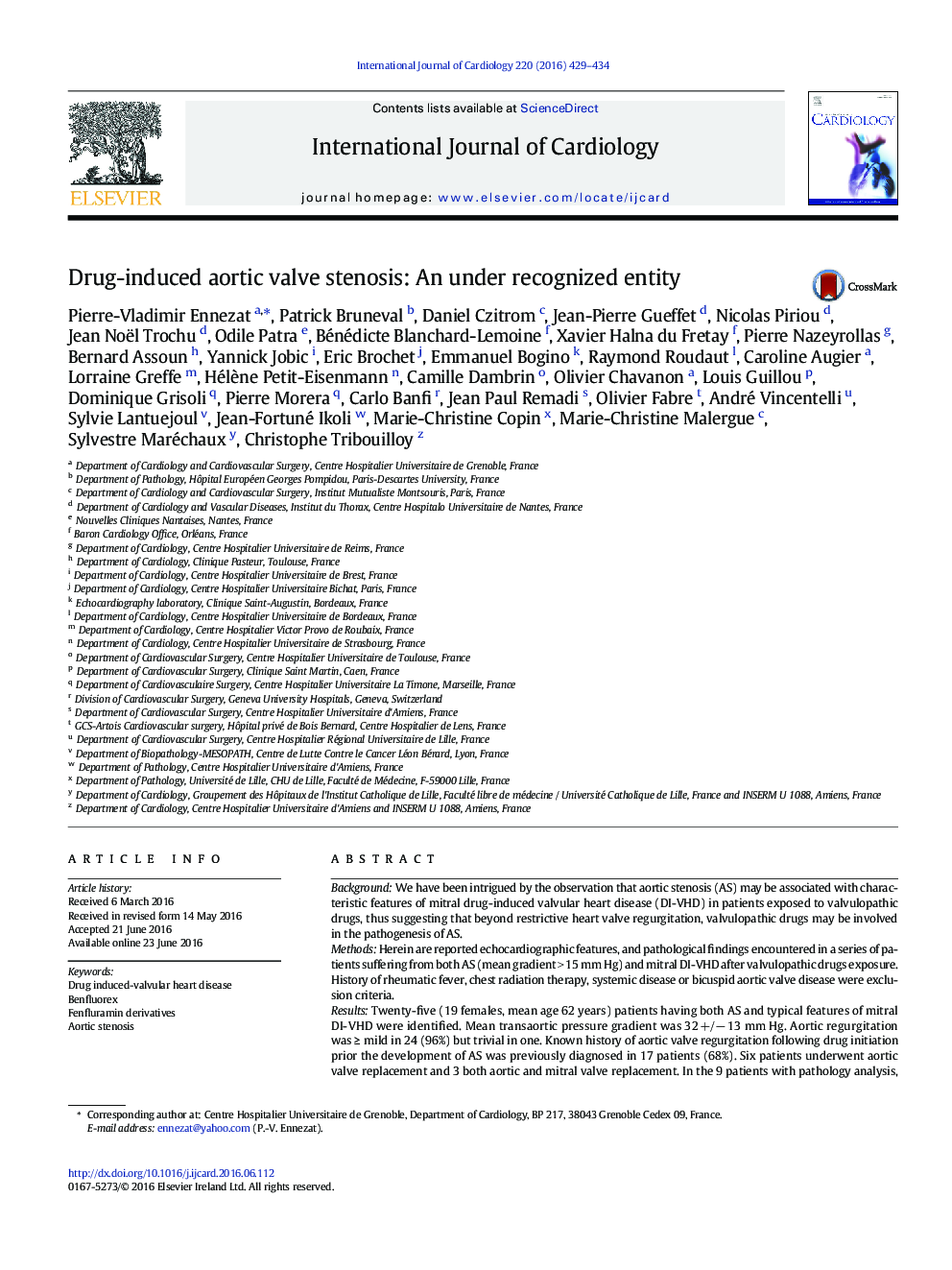| Article ID | Journal | Published Year | Pages | File Type |
|---|---|---|---|---|
| 5963530 | International Journal of Cardiology | 2016 | 6 Pages |
BackgroundWe have been intrigued by the observation that aortic stenosis (AS) may be associated with characteristic features of mitral drug-induced valvular heart disease (DI-VHD) in patients exposed to valvulopathic drugs, thus suggesting that beyond restrictive heart valve regurgitation, valvulopathic drugs may be involved in the pathogenesis of AS.MethodsHerein are reported echocardiographic features, and pathological findings encountered in a series of patients suffering from both AS (mean gradient > 15 mm Hg) and mitral DI-VHD after valvulopathic drugs exposure. History of rheumatic fever, chest radiation therapy, systemic disease or bicuspid aortic valve disease were exclusion criteria.ResultsTwenty-five (19 females, mean age 62 years) patients having both AS and typical features of mitral DI-VHD were identified. Mean transaortic pressure gradient was 32 +/â 13 mm Hg. Aortic regurgitation was ⥠mild in 24 (96%) but trivial in one. Known history of aortic valve regurgitation following drug initiation prior the development of AS was previously diagnosed in 17 patients (68%). Six patients underwent aortic valve replacement and 3 both aortic and mitral valve replacement. In the 9 patients with pathology analysis, aortic valvular endocardium was markedly thickened by dense non-inflammatory fibrosis, a characteristic feature of DI-VHD.ConclusionThe association between AS and typical mitral DI-VHD after valvulopathic drug exposure may not be fortuitous. Aortic regurgitation was usually associated to AS and preceded AS in most cases but may be lacking. Pathology demonstrated the potential role of valvulopathic drugs in the development of AS.
